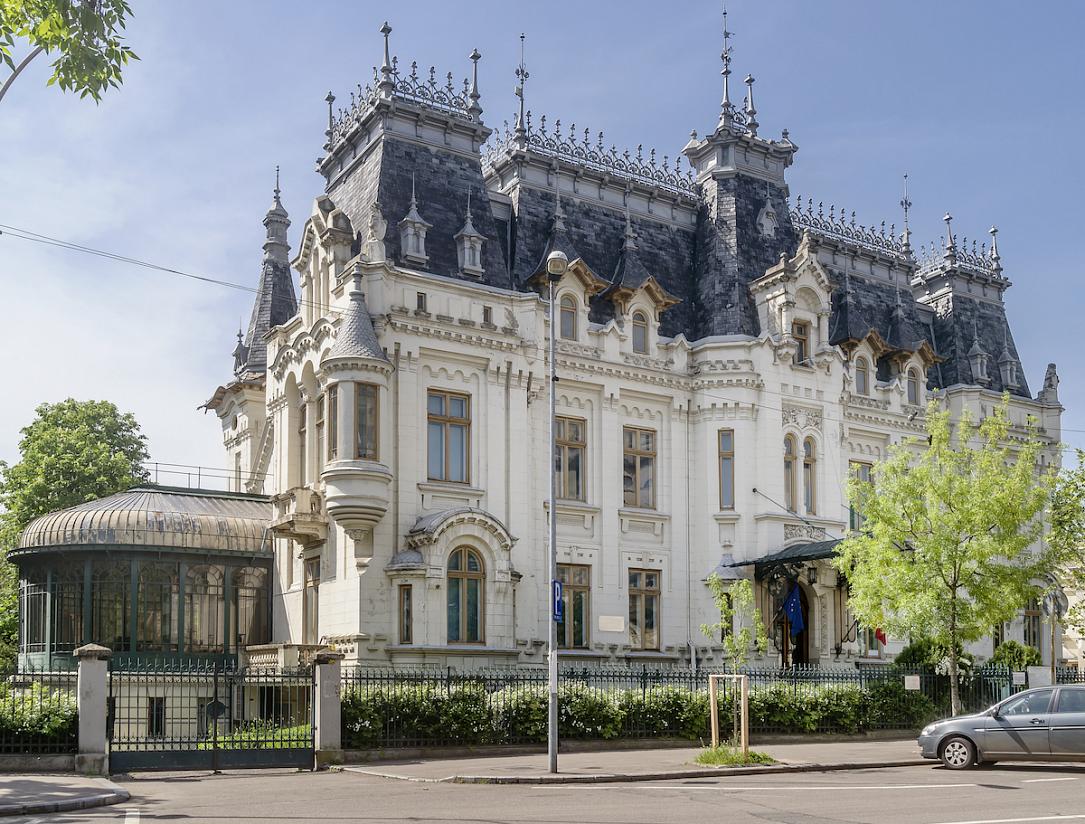Bucharest Centennial: Petre Antonescu, a remarkable Romanian architect of the last century

Romania-Insider.com has started a series of articles about Bucharest landmarks of architecture or history, which have witnessed the last century of what is now the Romanian capital, and noteworthy people who have helped build the Romanian capital as it is today. This project is supported by the Bucharest City Hall through the Public Monuments and Touristic Heritage Administration (AMPT), within the cultural program Bucharest-Centennial.
Check the full series of articles dedicated to the Centennial on Romania-Insider.com here.
Some of the most important buildings and monuments in Bucharest are designed by the famous Romanian architect Petre Antonescu. Among them is the Arch of Triumph - the symbolic monument located in the north part of the city, which still reminds passers-by of Romania’s victory in World War I and the Great Union of 1918 - and the current headquarters of the Bucharest City Hall.
Schooled in France, Antonescu emphasized the neo-Romanian style in his works, combining tradition with modern elements. In nearly nine decades of life, he designed dozens of public and private buildings.
Born in 1873 at Râmnicu Sărat, Petre Antonescu has been more than a famous architect in the first half of the 20th century. He was also a teacher, urban planner, restorer of historical monuments and academician. He also made an important contribution to the development of the Romanian school of architecture.
Petre Antonescu attended primary school in his hometown but finished high school in Bucharest. In 1893 he went to study architecture in Paris at the famousÉcole des Beaux-Arts, where he stayed until 1899. His teachers were French architects Julien Guadet and Edmond Jean Baptiste Paulin; the latter was well known for his project of reconstruction of the Baths of Diocletian in Rome.
Shortly after returning to Romania, Petre Antonescu began working in education and got involved in the preservation and restoration of architectural monuments. He became a member of the Historical Monuments Commission and started his first architecture projects. He promoted an architecture based on traditional forms, and supported the inclusion of national, traditional elements in architecture.
The architect designed both monumental public buildings, such as administrative palaces and banks, as well as private buildings. One of his most representative works is the Arch of Triumph, inspired by the famous Arc de Triomphe in Paris. The Romanian monument, built in 1921 and 1922, commemorates the victory of the Romanian Army in the World War I, and the most important historical event of Romania in the last 100 years: the Great Union of 1918.
Another important building signed by Petre Antonescu is the Palace which hosts the Bucharest City Hall nowadays. It was built over a century ago (1906-1910) and was originally designed to host the Ministry of Public Works, one of the most important institutions of the time.
In Bucharest, architect Antonescu also designed the Palace of the Marmorosch Blank Bank, which was the headquarters of this bank in the interwar period (4 Doamnei St.). This was one of the oldest banks in Romania but it no longer exists. He also designed the Palace of the Faculty of Law.
Among the private residences in Bucharest signed by Petre Antonescu are the Palace of Elena Krețulescu, a descended of two large boyar families (a building located on Ştirbei Vodă Street, near Cișmigiu Park - opening picture), the Lipatti House (on Lascăr Catargiu Boulevard) and the Constantin I.C. (Dinu) Brătianu House (on Calea Dorobanților).
Some of the most important buildings designed by Petre Antonescu outside the capital include the Craiova Administrative Palace, the Giurgiu River Rail Station, the Casino in Sinaia (a symbol-building of the city), the Palace Hotel in Sinaia, and the Palace of Justice in Buzău.
The original plans for the famous building of the Constanţa Casino also belonged to Petre Antonescu, who designed the building using an architectural style inspired by traditional Romanian art. However, the plans changed after the foundations were done, and the City Hall entrusted their modification to the architect Daniel Renard. He dropped the specificity of the Romanian style in favor of an Art Nouveau style.
Petre Antonescu was also a professor at the Superior School of Architecture and the Academy of Architecture in Bucharest between 1900 and 1938, and rector of the Academy from 1931 to 1938. He also led the Society of Architects (1912, 1919-1924, 1946-1949) and the Society of Diplomat Architects (1926-1932), and was a member of the Historical Monuments Commission (1904-1938) and of the "San Luca" Academy of Letters and Arts in Rome. In 1945 he was elected member of the Romanian Academy.
He died in 1965 in Bucharest and is still remembered by history as one of the most important and sophisticated Romanian architects of the first half of the 20th century. His works marked the architectural history of Romania and of the capital, and remained an important legacy for future generations of Romanian architects. Today, a street in the Tei neighborhood of Bucharest is named after the architect Petre Antonescu.
Sources: E-architecture.ro, Enciclopediaromaniei.ro, Wikipedia: Petre Antonescu,
Wikipedia: Cazinoul din Constanta; Digi24.ro
Photo source: Shutterstock













